Some dogs seem to walk through life without ever worrying about a thing – they’re just on a tail-wagging, ground-sniffing, face-licking adventure.
Other dogs go through life seeing potential danger around every corner. And these anxious pups need a little more love and effort to enjoy a high quality of life.
Fortunately, there are a number of ways to help soothe your frazzled pooch. We’ll dive into some of the most popular dog meds for anxiety below, as well as other techniques for calming an anxious dog.
Most Common Prescription Dog Anxiety Medications
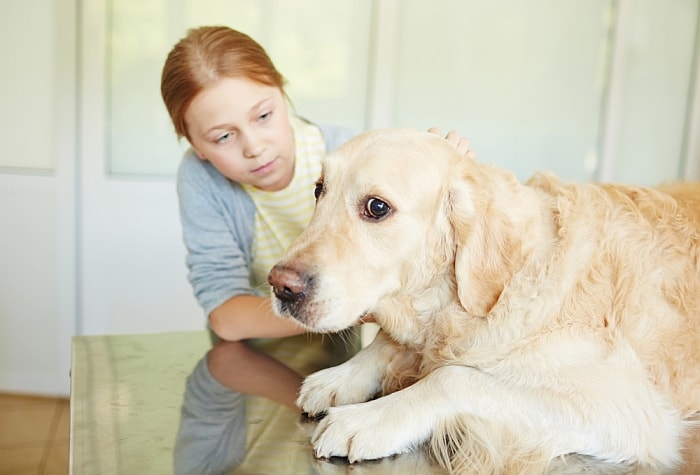
Veterinarians often prescribe the dog anxiety meds detailed below to help provide anxious dogs with a little relief. It is often necessary to experiment with different medications to achieve success, so you’ll need to work closely with your vet until you find the best dog meds for anxiety that work to soothe your pup’s nerves.
- Alprazolam – A common medication prescribed for humans that suffer from anxiety, Alprazolam is typically prescribed for dogs suffering from relatively severe anxiety. Alprazolam is usually administered daily, but it may take several weeks or months before you’ll see an improvement in your dog’s symptoms.
- Diazepam – Another common antianxiety medication for humans, diazepam is sometimes administered to dogs as a dog anxiety medication before they must undergo a stressful situation. Diazepam depresses the activity is some portions of the brain, which in turn reduces the amount of anxiety they feel.
- Lorazepam – A member of the same drug class as alprazolam and diazepam, lorazepam also works by depressing some of the brain’s activity, which helps to reduce anxiety. Lorazepam is usually administered on an “as needed” basis, rather than as a daily medication.
- Amitriptyline – Amitriptyline is a medication that works by increasing the levels of serotonin and norepinephrine in your dog’s brain. These neurotransmitters help to elevate mood and dampen anxiety, thereby eliminating the problem. It is important to make any increases or decreases in your dog’s dosage slowly to avoid causing imbalances in your pup’s brain.
- Buspirone – Buspirone is a relatively mild anti-anxiety medication that helps to boost the serotonin levels in your dog’s brain. It is typically used for dogs who suffer from mild anxiety, rather than those suffering from particularly severe cases of the disorder.
- Clomipramine – Sold under the brand name Clomicalm, clomipramine also works by encouraging your dog’s brain to produce more serotonin and norepinephrine, which usually helps alleviate some of his anxiety. The FDA has approved clomipramine for the treatment of canine separation anxiety, but some vets use it to treat more generalized anxiety disorders as well.
- Dexmedetomidine – Primarily used to treat phobias and the anxiety caused by loud noises (thunder, fireworks, etc.), dexmedetomidine actually works by reducing the amount of activity in some portions of your dog’s brain. Unlike many other antianxiety medications for dogs, dexmedetomidine is usually administered when necessary, rather than on a daily basis.
- Fluoxetine – Fluoxetine is a drug that is classified as a Selective Serotonin-Reuptake Inhibitor (SSRI), which works by increasing the amount of serotonin in your dog’s brain. FDA-approved for the treatment of separation anxiety, fluoxetine is typically given as a regular, daily medication.
Don’t have a prescription? There are some dog anxiety supplements that serve as over-the-counter anxiety meds for dogs, but they are rarely quite as powerful and effective as prescription canine anxiety meds. However, some online vet consultation services will write you a prescription, which you can then order through an online pet pharmacy.
Non-Medicinal Remedies To Cure Dog Anxiety
Because medicine to calm dogs can cause a variety of side effects, many owners and veterinarians like to experiment with non-medicinal solutions first.
Some of these types of solutions may provide relief for your pooch and help reduce or eliminate his stress, anxiety, and worry.
Thundershirt
This is a sponsored placement, in which an advertiser pays a fee to be featured in this article. Learn more
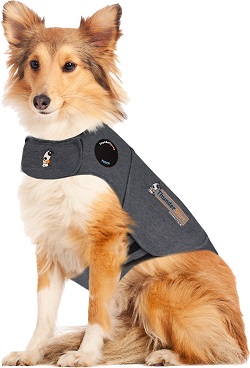
Thundershirt
A snug-fitting garment that swaddles your pup and helps him to feel a little calmer.
Developed by behavioral scientists, the Thundershirt is a nice alternative to medicines for many dogs, and it has proven to be an effective treatment for many anxious dogs.
Because the Thundershirt won’t cause any side effects and is one of the safest possible treatments for anxiety, it is often an ideal place to start, when searching for a solution to your dog’s anxiety. Read our full hands-on Thundershirt review to better assess if this anxiety wrap could be a good solution for your pup.
We also have a guide on how to create your own DIY Thundershirt if you’re not crazy about putting up money for the official version.
Chillout Treats
This is a sponsored placement, in which an advertiser pays a fee to be featured in this article. Learn more

Chillout Treats
Over-the-counter dog treats that are designed to reduce your dog’s stress and help him feel more comfortable and secure.
Comprised of colostrum (the very first bit of milk produced by a dog who has just given birth), vitamin B1 (thiamine) and an amino acid called L-Theanine, which is thought to boost serotonin production, Chillout Treats are designed to be administered about 30 minutes prior to a stressful event.
Chillout Treats have a delicious chicken-liver flavor that dogs love, so administering them is usually pretty easy.
Pheromones
This is a sponsored placement, in which an advertiser pays a fee to be featured in this article. Learn more
Adaptil Calming Pheromone Spray is a spray designed to emit calming pheromones. Owners have mixed results with these types of Adaptil pheromone diffuser sprays, but they’re an easy non-prescription option to try for dogs with anxiety.
Adaptil comes in the form of a calming dog collar too!
Rescue Remedy
This is a sponsored placement, in which an advertiser pays a fee to be featured in this article. Learn more
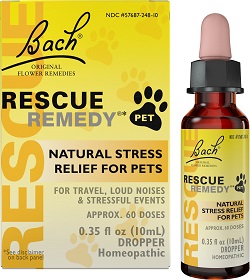
Rescue Remedy
A homeopathic product that reportedly helps reduce anxiety in dogs.
Formulated from a variety of plant and flower extracts, Rescue Remedy contains no real medications, and the method by which it is reported to work remains unclear, but some owners have found it helpful.
We’re skeptical of it, but there’s likely no harm in trying it (provided your vet gives you the green light).
A Secure Crate
Dogs often feel safe when allowed to hang out in confined, dark spaces, probably because it simulates a den. But most owners use crates that are relatively open, and provide sight lines in all directions. Fortunately, there are two solutions:
- You can fit your dog’s existing crate with a cover, which will make the crate darker and provide a greater sense of safety. Crate covers are also nice because you can use them when leaving the house, while taking them off once you get home.
- You can purchase a crate that provides a relatively dark and cozy space inside. By simply using a dark and secure crate, you alleviate the need to use a cover. Additionally, many good crates for dogs with separation anxiety, which are often reinforced to help keep panicky dogs safe and secure if they freak out when you leave.
Dog Toys
If you can keep your dog busy and give him something to occupy his mind, you may be able to alleviate some of his anxiety – particularly if the anxiety occurs when you leave him alone.
Just about any safe chew toy will work, but interactive, mentally stimulating puzzle toys are even better. Many owners swear by giving their dog a good frozen stuffed Kong – just stuff the Kong with wet food, freeze it, and your dog will be too occupied licking up the treat to worry about whatever is making him nervous.
Just keep in mind that goodies like these are really only helpful for dogs with mild anxiety. If a dog has extreme or severe anxiety, they likely won’t eat at all.
Interactive Communication Devices
Thanks to the magic of technology, dog owners now have a number of different ways they can communicate with their canine from afar. By communicating with your pooch a little during the middle of the day, you may be able to reduce his anxiety a bit.
The best way to do this is through the use of a dog camera, allowing you to see and hear your pooch when you log onto the camera’s companion app. We recommend opting for a camera that can dispense dog treats, as can allow you to regularly treat your dog during high-stress occasions even when you’re away from home, helping to keep them calm as a result.
Management and Behavioral Strategies for Reducing Anxiety
Products and tangible items are not the only way to help reduce your dog’s anxiety, and many owners have success by implementing various management strategies. Some of the strategies that typically produce the best results include:
Increase the amount of exercise your dog receives. Exercise can help your dog burn through some of his excess energy, and it also releases endorphins in your dog’s brain, which will help elevate his mood. Don’t forget that mental exercise is important too, so provide your pup with plenty of enrichment activities too.
Leave the home quickly and quietly. If you make a big deal out of leaving the home, your dog will think it is a big deal too. So, instead of engaging in long goodbyes, just grab your stuff and walk out of the house confidently.
Make your dog’s crate as comfy as possible. The more positively your dog views his crate, the less likely he is to experience anxiety when you put him inside and leave the house. You can give your dog treats inside his crate from time to time to help promote a positive association with the crate, and be sure to provide a comfy blanket or crate-appropriate dog bed inside, so he remains comfortable while waiting for you to return.
Adjust your schedule. You may be able to reduce your dog’s anxiety by altering your schedule a bit. For example, you may want to try running errands during his typical mid-day naptime. Alternatively, you could try to take him out for some playtime and exercise immediately before leaving.
Add another pooch to your family. Some owners have conquered problems with dog anxiety – especially separation-induced anxiety – by adding another pet to the home. This isn’t always an effective strategy, and you should always think carefully before bringing home a 2nd dog, but a playmate might help keep your anxious dog company and prevent him from feeling lonely.
Take your dog with you when you need to leave. If nothing else works, you may find that the best solution is to simply take your dog with you whenever possible. You’ll need to ensure your dog is very well-behaved in public to do so, but this can all but eliminate the problem of separation anxiety for many dogs.
Symptoms of Anxiety in Dogs
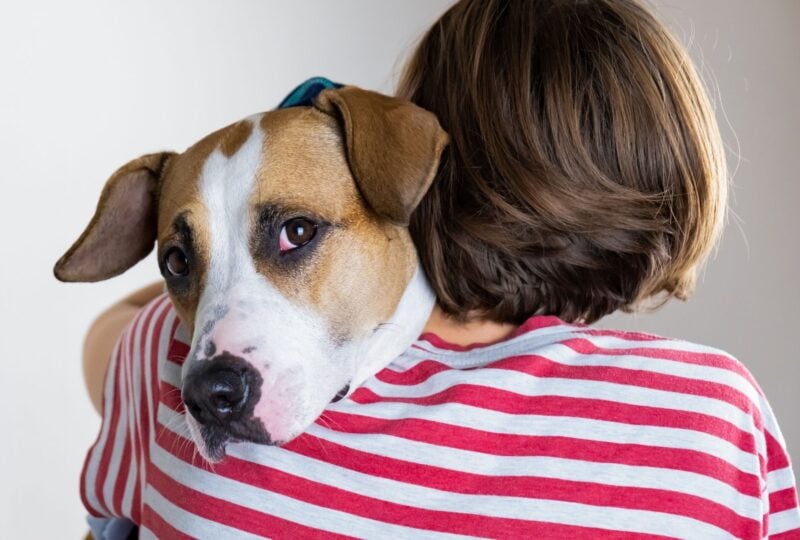
Your dog can’t tell you he is anxious, so you need to familiarize yourself with some of the most common signs and symptoms of canine anxiety.
No single symptom is definitive, and some dogs may exhibit one or more of these symptoms without necessarily being anxious. However, the following signs certainly warrant further investigation.
- Inappropriate Elimination – Housebroken dogs who poop or pee in inappropriate places are often exhibiting the signs of anxiety. Note that this doesn’t mean your dog is anxious just because he has an accident, but if it occurs more than once or twice, you should probably investigate the possibility that he is more nervous than normal.
- Clinginess – Dogs that hover around their owners obsessively are often consumed with worry. It can, however, be difficult to distinguish dogs who simply love being near their owners, with those who are doing so as a coping mechanism, but your vet or a behavioral therapist may help you figure out the cause.
- Destructive Chewing – Dogs often try to alleviate their anxiety by chewing on various items, and many will select things that smell strongly of their owners. So, if your pooch decides to start chewing on your shoes or the remote control for your TV, he may be suffering from an unhealthy level of anxiety.
- Trembling – Shaking or trembling is a common sign of anxiety. It is probably most common among smaller dogs, but even the biggest pups may shake if they are sufficiently nervous.
- Panting – Dogs pant for a variety of reasons, such as when they are hot, tired or excited. However, panting can also indicate anxiety, particularly if it occurs when your dog is neither hot nor tired.
If you suspect your dog is suffering from anxiety, it may be smart for you to read up on canine calming signals – these are small body language cues dogs use to illustrate discomfort or stress.
Being aware of these indicators can help give owners a richer understanding of what’s happening in that canine noggin’.
Why Do Dogs Suffer from Anxiety?

Canine anxiety can arise for a variety of reasons, and it is important to familiarize yourself with some of the most common ones, to have the best chance of helping your dog feel better.
Note that some poor pups become anxious for multiple reasons, rather than a single cause. However, some common causes include:
Past Trauma
It’s depressing to think about, but many dogs experience anxiety as a result of a past traumatic incident (or, in particularly heart-breaking cases, multiple traumatic incidents). Examples include conflicts with other dogs, serious injuries, or run-ins with despicable humans.
If you’ve raised a dog since puppyhood, you may have an idea of what potential past traumas may be haunting your pooch. However, if you’ve only had your dog as an adult or got them from a shelter, your dog’s past traumas may forever remain a mystery.
Even without knowing the specifics of your dog’s traumatic incidents, you and a canine behavioral therapist should be able to work together to work past your dog’s issues.
Poor Socialization
Dogs who don’t get to meet plenty of people and other dogs when they are young may experience anxiety during encounters later in life.
This is why it’s so important to socialize your puppy early on to all different ages, races, and types of people. Neglecting this puppy parental duty can cause big issues in the future.
Illness
Some illnesses and chemical imbalances can cause pups to suffer from anxiety. This includes things that fall into the mental illness category as well as more typical illnesses, including everything from viral or bacterial infections to cancer. This is one of the reasons it is so important to work with your vet while trying to cure your dog’s anxiety.
Frightening Stimuli
Some dogs experience anxiety in direct response to specific stimuli, such as fireworks, thunder, or unfamiliar smells. These types of things usually only cause temporary anxiety, which resolves shortly after things go back to normal.
Separation
Some dogs become extremely anxious when separated from their humans (some can also become anxious when separated from other dogs they’ve bonded with).
Owners may mistake separation anxiety for devotion, but make no mistake – separation anxiety is unhealthy and is the results of an unconfident, insecure dog. Owners should always do their best to alleviate dog separation anxiety – your dog will be happier and don’t worry, they won’t love you any less!
Social Strife
Sometimes, certain dogs cause other dogs to feel anxious. Sometimes dogs overtly bully other dogs, but in other cases, the intimidation inflicted is very subtle, and often goes unnoticed by owners. Again, this is when knowing your canine calming signals can really come in handy!
Do you have an anxious dog that needs help relaxing? What types of strategies and techniques have you implemented? Were they successful, or did you end up at the vet’s office seeking additional help? Are there specific things that cause your dog anxiety or does your dog remain nervous all the time?
Let us know all about your experiences in the comments below!
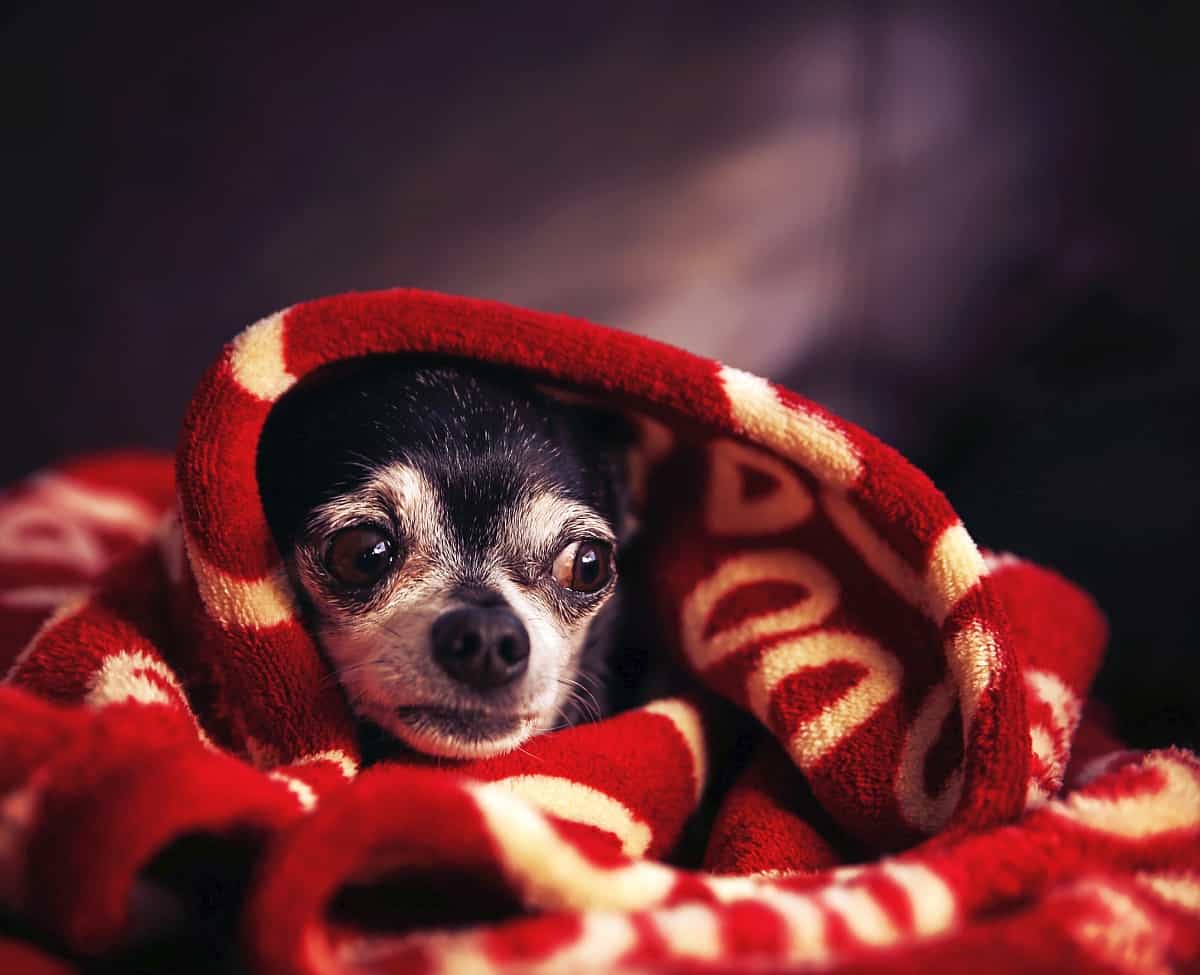





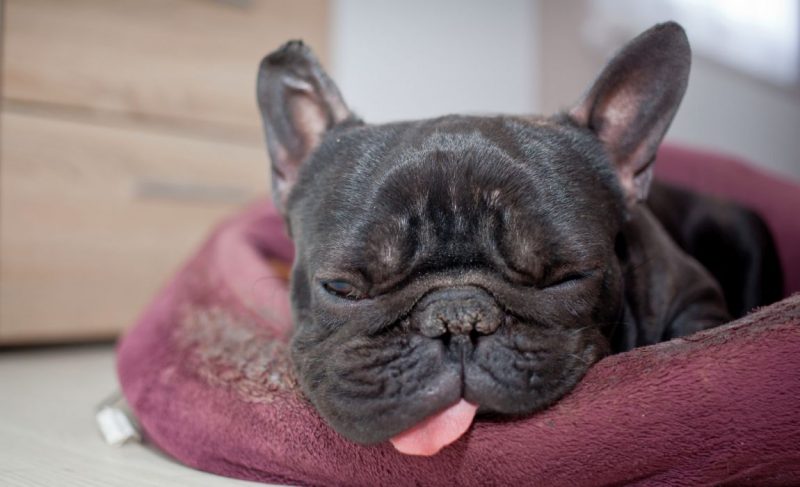
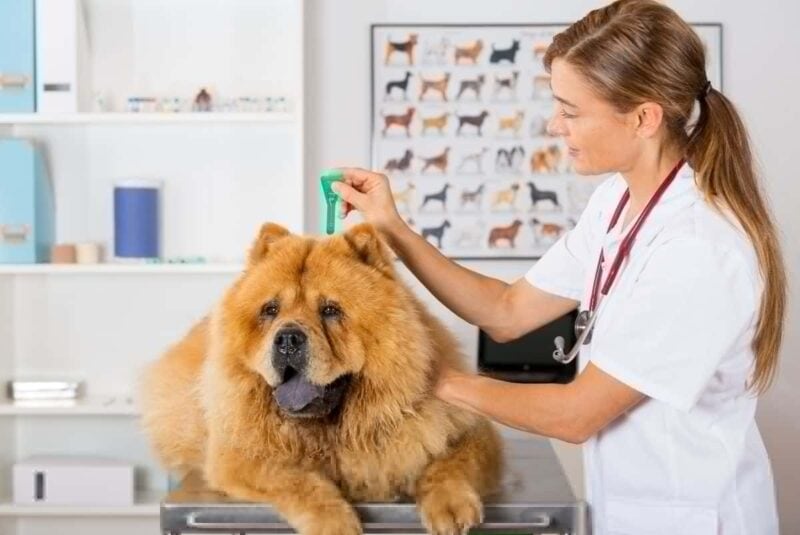
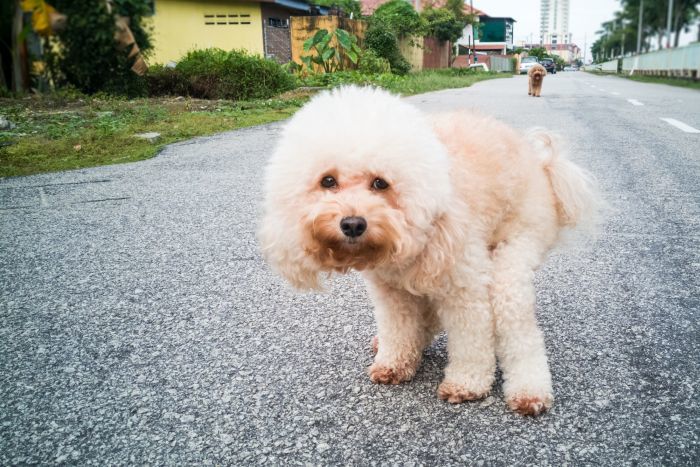

Leave a Comment